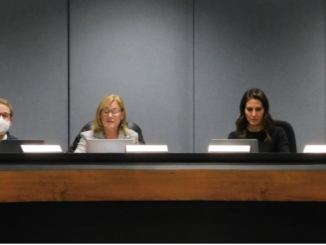
By Kimi Danaei
Executive Theme Editor
Manhattan Beach Unified School District made changes to the 2020-2021 school year to accommodate for the adjustment to virtual distance learning.
The changes the district made include the addition of a social-emotional learning class on Wednesdays, a new block schedule, and the removal of the learning management system, Canvas. Board members worked closely with the district subcommittees, made up of parents, staff, and students, to ensure that the learning experience and well-being of students is positive during this shift to online learning. Board meetings were held frequently throughout the months of July and August for members of the district’s board to discuss the proposals made by the subcommittees and the phases of re-opening schools.
“I think that the district learned a lot from how things went during online learning last spring and they worked really hard to make a lot of changes so that we could be a lot more prepared this year,” senior and secondary subcommittee member Kieran Malik said. “There really isn’t a perfect way to [make this change] but I think that it’s definitely a big improvement.”
Wellness Wednesday was introduced to Costa students this year. The purpose of Wellness Wednesday is to reduce stress by giving students the opportunity to do activities they enjoy or to catch up on work, according to Costa counselor and subcommittee member Eliza Santarosa. Students are given a late start, starting at 10:10 a.m., and are only required to attend one zoom. Students are, however, expected to complete 37 minutes of asynchronous school and homework which acts as attendance.
“Wellness Wednesday is meant to be a breath of fresh air for everyone,” Santarosa said. “I hope that students take this time to focus on themselves: go for a walk, meditate, surf, chat with friends; whatever fills you with energy to get through the rest of the week, do it.”
The Social-Emotional Learning (SEL) class plays a major role in Wellness Wednesdays each week. Students meet with an assigned teacher for about 20 minutes on Wednesdays to receive help, get school announcements, and communicate with other students. The intention of this class is to give students the time and place to ask questions and build a connection with peers in their grade, according to Malik.
“A lot of the parents and teachers, as well as myself, kept coming around to the fact that it’s difficult to feel like you’re apart of a school when you’re just taking classes through a screen and can’t be around people while in class or for breaks, lunch, and extracurricular activities,” Malik said. “[The committee] wanted to make online learning more of a school environment than just decentralized classes; we wanted it to be a way to get information across and ideally a space for people to talk that isn’t for educational purposes.”
Another change the district has made this year is the switch using Google Classroom exclusively. After four years of using Canvas, the district has decided to strictly use the online learning system, Google Classroom. The switch to one platform was made with the goal of producing an easier way for students and parents to access their work, according to MBUSD School Board President Jen Cochran. Google Classroom is a free service, making it more cost-efficient and beneficial for the district.
“I thought Canvas was a better product but it was harder for students and parents when teachers were using different tools so I think it is a good thing that we are all using the same system now,” Costa teacher and subcommittee member Aaron Braskin said. “Getting rid of Canvas will be a net plus for us but I believe we would have been better served by replacing it with a more comprehensive tool.”
The district has decided to continue having a block schedule this year as it had last school year in the spring. This year, however, class time has increased to around an hour and 45 minutes. This is due partly to state requirements on the amount of time spent doing synchronous and asynchronous school work. This block schedule reduces the number of classes and zoom calls students to have in a day from around six to three classes. This gives students time to get asynchronous work done without feeling rushed.
“Every class and teacher is required by the state to have a certain amount of synchronous and asynchronous learning so the block schedule allows teachers to have that zoom and have time to assign homework or other classwork,” senior and board member Emma Clarke said. “That longer block time helps with time management in terms of focusing on two or three classes a day and it allows students to have a longer, uninterrupted time with a teacher which I think allows for more things to get done.”
The block schedule is also beneficial for the potential reopening of schools. The district has discussed the assembling of students into smaller groups for the return of in-person learning. These groups make it easier for students and staff to be socially distanced in classes and on campus. This idea was created and discussed for the purpose of helping to prevent and minimize the spread of the virus and protect students and staff, according to Clarke.
“When we are eventually allowed to return students to the classroom we have to follow strict protocols; students have to be 6 feet apart in classes and wear masks,” Cochran said. “In order to keep students 6 feet apart in our classrooms, we know we will have to significantly limit the number of students on campus and the only way to do that is to split the classes and have half of the students on campus.”





Leave a Reply